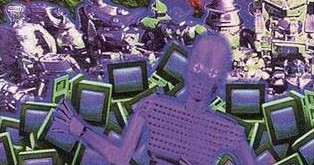|
[Close file]
Did You Know?
Bits and Pieces from the NR Trivia Collection
#6: Crystal Palace Station Grid
by Jens Kreutzer
It all began in 1851. On Mayday that year, the Great Exhibition of the Industry of all Nations was opened in London's Hyde Park - and it
was housed in the largest building the Victorian world had ever seen before. Designed by the architect Joseph Paxton and built in about
nine months' time, mainly of iron and glass, the Crystal Palace looked like a giant hothouse styled in "Moorish" fashion, quite the rage at
the time. Covering an area of 18 acres, the Crystal Palace was 1,848 feet long and 456 feet wide. It is claimed that the entire
glass-production capacity of England was employed on the edifice, which was to receive more than 6,000,000 visitors from all over the world
during the year that the exhibition lasted.
In June 1852, the Crystal Palace was dismantled and moved to the outskirts of London, to Sydenham in Kent. The reconstruction was
completed in 1854, the redesigned building being smaller now but taller, and with a glass surface that doubled the original one in size.
Situated in a huge area of parkland, the Crystal Palace became the world's first theme park for mass entertainment, featuring exhibitions,
concerts, sports, and other activities. The year 1853 saw another Crystal Palace erected in New York for its exhibition.
Unfortunately, the original Crystal Palace was destroyed by fire in 1936 and hasn't been rebuilt since. The area where it once stood is
still known as "Crystal Palace" today, and local residents are now fighting against a government plan to construct a multiplex cinema
complex on the site.
Crystal Palace is also the code name for Cheyenne Mountain in the USA, under which is the command bunker for US Defense command SAC and
NORAD. It was designed to survive a direct nuclear strike: The whole place is on springs and is buried deep inside the mountain. A
location called Crystal Palace Station also exists in the novel Teklab by William Shatner.
Here, we leave fact and move over to fiction. As can be seen on the illustration of Crystal Palace Station Grid, the Crystal Palace in the
Netrunner world is a huge orbital space station, named after its Victorian predecessor. Like almost everything in Netrunner,
the Crystal Palace space station is taken from R. Talsorian's Cyberpunk 2.0.2.0.Eroleplaying game. In the supplement Rache
Bartmoss' Guide to the Net, we read that the Crystal Palace is situated at a stationary point (Lagrange-1) halfway between the Earth
and Luna. Built and controlled by ESA, the space station is part of the Orbitsville Netspace Region. Rache Bartmoss himself has the
following to say about this topic (p. 130f.): "Getting into Orbitsville is a little different than it is for the other regions. You must
first go to one of the equatorial belt LDLs [Long-Distance Links] like Bogota or Nairobi. From there, you can jump to LEO [Low-Earth Orbit]
..., shift up in the LDL to the Orbital level, and run the region. ... [T]he delays are quite noticeable, and rather disorienting to
grav-grounded weeflerunners. You just have to get used to getting visual and tactile feedback a second or two after you do things."
This delay is reflected in the higher bit cost to break ice subroutines in the Palace.
What the actual space station looks like can be gleaned from the card artwork by R. Talsorian; its layout is also reflected in Netspace,
as Rache Bartmoss tells us (p. 133): "The grid, like the Crystal Palace, is built with five ribbons encircling a central data trunk which
runs along the station's axis like a spinal cord. In addition, the rings have microwave transmitters along their rims to facilitate
intercommunications between the rings without having first to go through the center pole."
As in Netrunner gameplay, the Crystal Palace is also a favorite of Corporations in Cyberpunk: "Every government of note
and every important corporation has an embassy or office here, and therefore a data fort to be run. The city grid itself is small and
tight, and different from Earth-bound city grids in that it curves back in upon itself." So, the next time you run a juicy target
up in orbit and curse about your Clowns having trouble with the delay, remember that you are far out - halfway to the moon in fact.
[Previous Did You Know]
[Close file]
[Next Did You Know]
|
|
|

